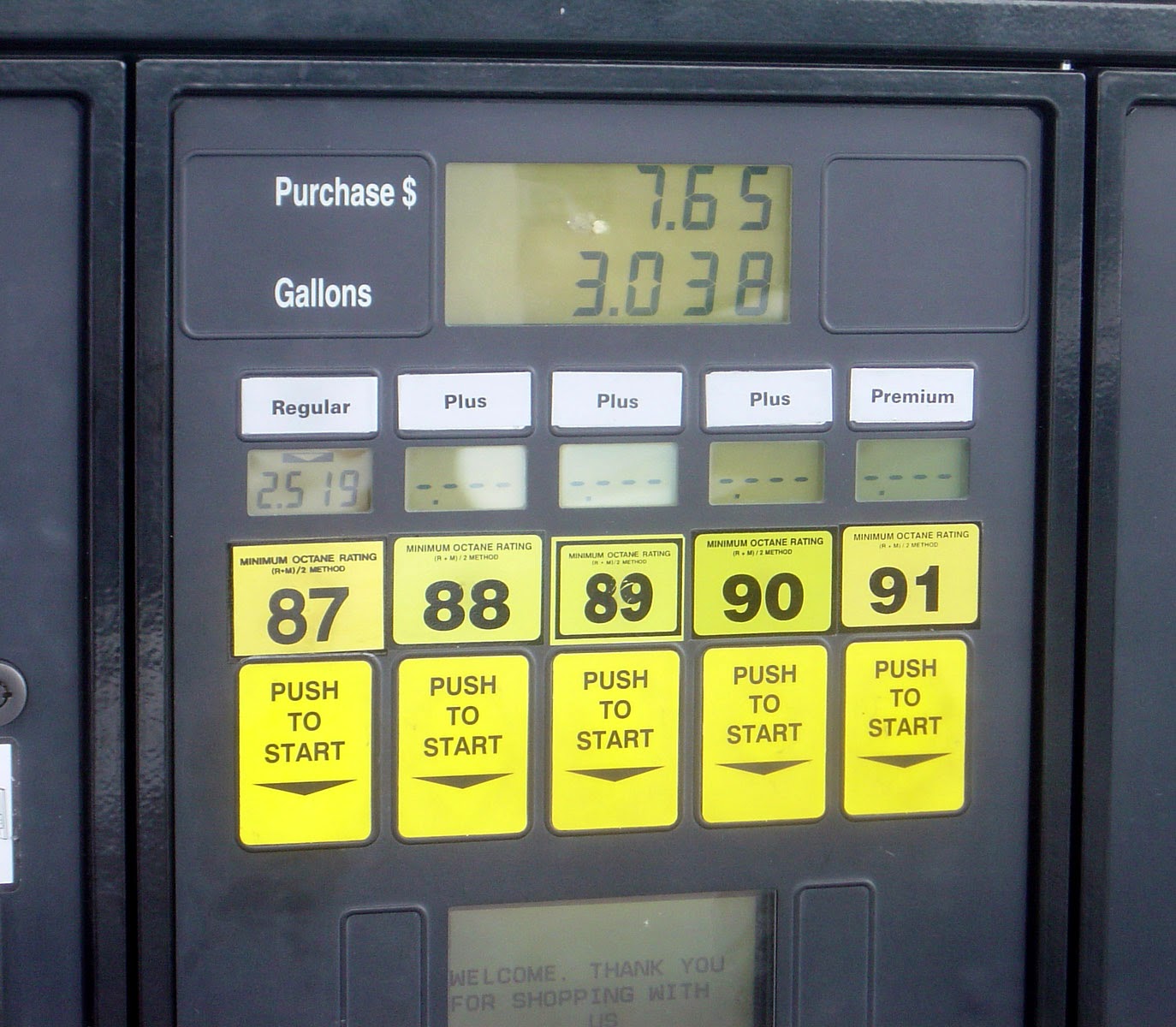Decoding Octane: 87 vs 89 Gas Explained

Ever stood at the gas pump, puzzled by the different octane options? You’re not alone. Choosing between 87 and 89 octane fuel is a common dilemma for drivers. This article breaks down the key distinctions between these two grades, helping you make informed decisions at the pump and potentially save money in the long run.
The central difference between 87 and 89 octane lies in their resistance to knocking. Knocking occurs when the air-fuel mixture in your engine ignites prematurely, causing a knocking or pinging sound. Higher octane fuels, like 89, are more resistant to this premature detonation. This resistance is particularly important in high-performance engines, which often have higher compression ratios that make them more susceptible to knocking.
Understanding octane’s role requires a quick look at how engines work. The air-fuel mixture is compressed within the engine cylinder before being ignited by the spark plug. Higher compression generates more power, but it also increases the risk of knocking. Higher octane fuels can withstand this higher compression, allowing the engine to operate smoothly and efficiently.
While higher octane fuel might sound superior, it's not always the best choice for every vehicle. The recommended octane rating for your car is specified in your owner's manual. Using a higher octane than recommended won't necessarily improve performance or fuel efficiency and will definitely cost you more at the pump.
The price gap between 87 and 89 octane can vary, but 89 is consistently more expensive. So, is it worth the extra cost? That depends on your car. For most standard vehicles, 87 octane is perfectly adequate. However, high-performance engines, particularly those with turbochargers or superchargers, often require higher octane fuel, like 89 or even higher, to prevent knocking and maintain optimal performance.
The development of different octane grades followed the evolution of engine technology. As engines became more powerful and efficient, with increased compression ratios, the need for fuels with higher knock resistance became apparent. 87 octane emerged as the standard for most vehicles, while higher octane grades, like 89 and 91, cater to high-performance engines.
One of the main issues surrounding octane choice is the misconception that higher octane always equates to better performance. This is simply not true. If your car is designed for 87 octane, using 89 will not magically boost horsepower or improve fuel economy. It’s essential to follow your manufacturer's recommendations to avoid wasting money on unnecessary higher-octane fuel.
Advantages and Disadvantages of 87 vs 89 Octane
| Feature | 87 Octane | 89 Octane |
|---|---|---|
| Price | Lower | Higher |
| Suitability | Standard vehicles | High-performance vehicles |
| Knock Resistance | Lower | Higher |
Frequently Asked Questions:
1. Will using 89 octane damage my engine if it's designed for 87? No.
2. Can I mix 87 and 89 octane? Yes.
3. Does higher octane improve fuel economy in all cars? No.
4. What happens if I use a lower octane than recommended? Knocking may occur.
5. How do I know which octane my car needs? Check your owner's manual.
6. Is premium gas always better? No, it depends on your car’s engine.
7. Can I switch between octane grades? Yes, as needed based on your driving conditions or vehicle recommendations.
8. Does octane affect engine lifespan? Using the incorrect octane can potentially affect engine lifespan due to knocking and potential damage.
Tips and tricks: Pay attention to your car's performance. If you hear knocking on 87 octane, consider trying 89. Keep your owner’s manual handy for quick reference to your recommended octane rating.
In conclusion, understanding the nuances of octane ratings empowers you to make informed choices at the gas pump. The critical difference between 87 and 89 octane lies in their knock resistance. While 89 octane is essential for some high-performance vehicles, most standard cars run perfectly well on 87. By following your manufacturer’s recommendations and understanding the role of octane, you can avoid spending extra money on unnecessary higher-octane fuel while ensuring your engine’s health and performance. Make the right choice for your vehicle and budget, and drive with confidence knowing you’re getting the most out of every fill-up.
The subtle power of gray sage exploring a timeless paint color
Decoding duramax lzo oil usage a comprehensive guide
The enigma of the black green lantern exploring dcs emotional spectrum













